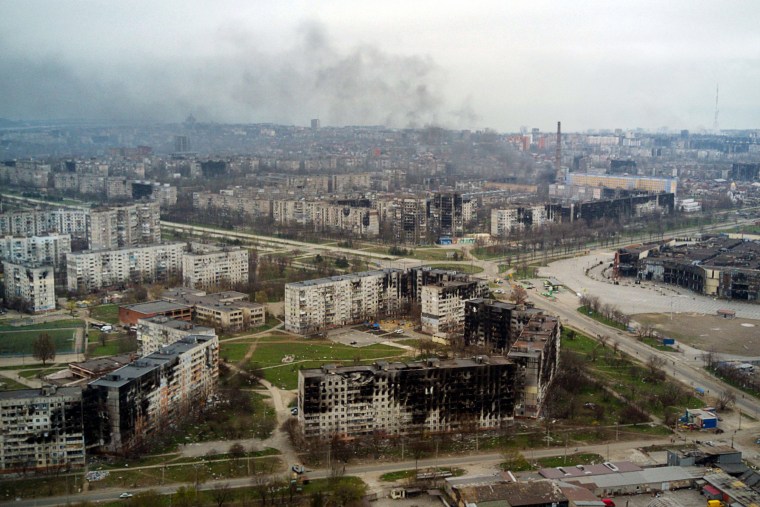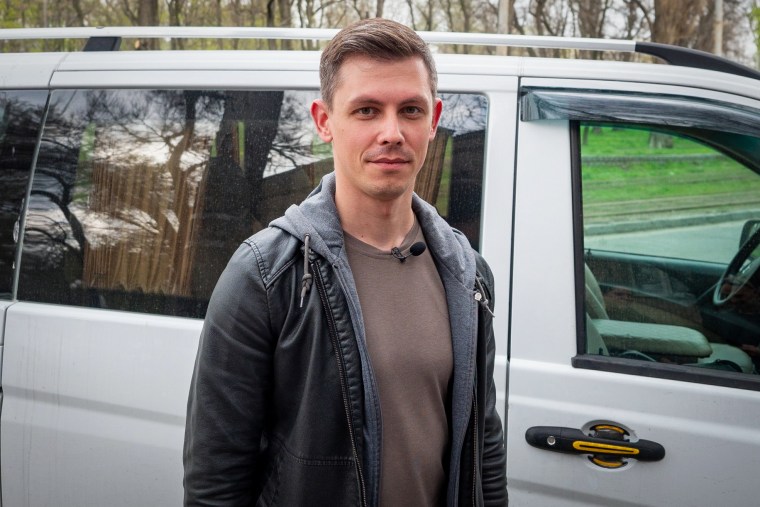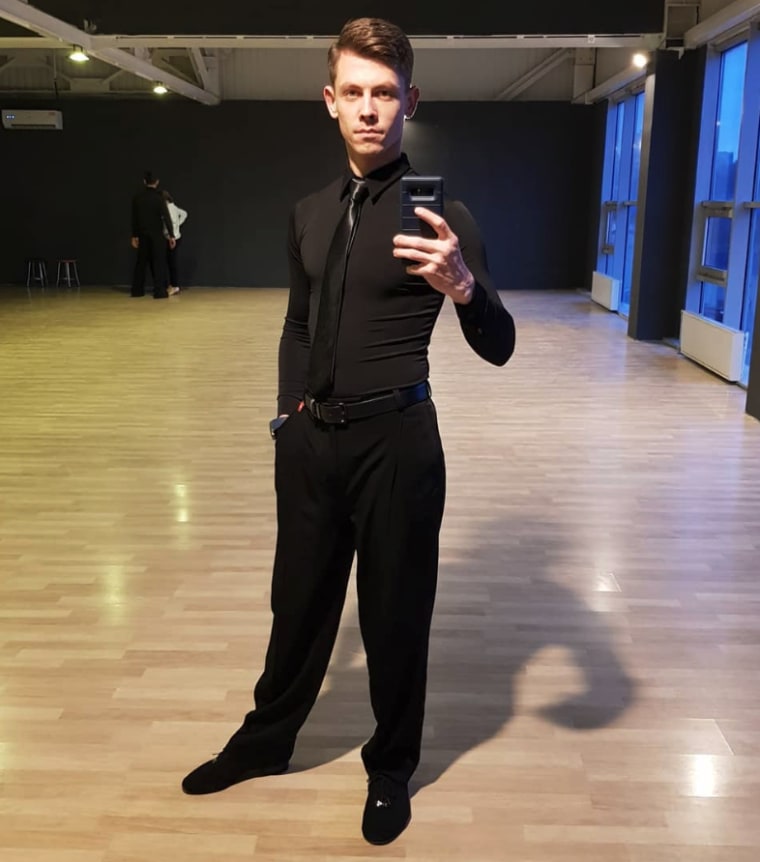DNIPRO, Ukraine — Facing potential conscription into Ukraine’s military, ballroom dance instructor Nazar Shashkov, 32, says he would be “useless” with a gun.
But the soft-spoken Shashkov has already faced more danger than some army recruits, having made repeated journeys behind enemy lines to rescue his students and others trapped in his besieged hometown of Mariupol.
A pro-Russia soldier “took a gun in his hand and told me to get on my knees in the corner,” he said, describing an encounter at a checkpoint in the city.
As he kneeled with his arms in the air, the soldier put the gun to his head and held it there for about a minute, Shashkov said.
“I was silent. I didn’t say anything,” he recalled, adding that the soldier eventually let him go but only after robbing him of his money and warning him that his next trip to Mariupol would be his last.
Up to that point Shashkov had beaten the odds in avoiding such a confrontation. He had dodged shrapnel that tore into his van and swerved around craters, landmines and dead bodies to rescue a total of around 100 people on nine trips in and out of the beleaguered city.

Before the invasion, Shashkov said he had used his van to ferry his students to dance competitions. Shrapnel has since torn a hole in the bodywork near his dance school logo on the side of the vehicle.
“I was terrified,” Shashkov said, describing his first trip out of the city. “I wasn’t driving very carefully.”
Russia’s invasion of Ukraine has fractured the country, sending more than 11 million Ukrainians fleeing for safety farther west and at times splitting families, with many civilians remaining stuck in cities behind Russian lines or in the midst of Russia’s military push in the east. Humanitarian corridors have been stop-and-start, leaving some Ukrainians to stage their own rescue efforts.
Except for a pocket of Ukrainian soldiers holed up at the Azovstal steel plant, Mariupol is now almost completely occupied by Russian forces after weeks of heavy bombardment. Power, water and gas were cut off soon after the Russian invasion began in late February, and there is no cellphone service.

City officials estimate 21,000 people have been killed in the fighting in and around Mariupol, and plans for formal humanitarian corridors out of the city have repeatedly failed amid accusations of cease-fire violations by both Ukrainian and Russian officials.
Like many Mariupol residents, Shashkov said he had spent weeks sheltering in a basement, and was black from head to toe with dirt when he first made it out of the city with a small contingent of students and their family members on March 16.
“When they could wash with warm water, some of them started crying,” he said.
Lying down for the night at a refuge after his first proper meal in weeks, Shashkov said he couldn’t sleep.
“You’re thinking about the rest of your friends, and kids and students, not in such conditions as you right now,” he said.
“They were starving, they were cold. There was an information vacuum. No information. And we are lying on the warm floor with a full stomach,” he added.

He organized a convoy of vehicles with the father of one of his students to go back into the city on March 19. They lied to Russian soldiers at checkpoints, saying they were picking up family members and bribing the soldiers with packets of cigarettes.
Shashkov’s mother, who had taught him how to dance, had already left Mariupol. She had refused to flee with him during his initial escape, insisting that her son rescue his students first. Instead, the 69-year-old walked 30 kilometers out of Mariupol on foot, Shashkov said.
“I tried, but it was useless,” he said, smiling at the memory of trying to cajole his mother into his van.
Instead, Shashkov said he scoured the city for his students, a task made difficult by a lack of a mobile phone network.
With little information about the outside world making it to the city, Shashkov’s trips also meant he became a conduit for crucial information about safe routes out of the city on foot, as well as Ukraine’s battlefield successes against Russia’s military.
“The Russian military tells them that Ukraine left them there. There’s no buses. That there is no help from Ukraine, that Ukraine doesn’t care about you,” Shashkov said.
“Russian news tells them most of Ukraine is already occupied. The rest of Ukraine will be occupied in two days. So the only way to evacuate is toward Russia,” he added.
After repeated forays into Mariupol, his luck ran out on March 27, when he said he had the gun held to his head at a checkpoint.
He now ferries displaced people around unoccupied parts of Ukraine, he said, but misses his dance school and his students, who felt like family. On the dashboard are stuffed toys that children he had rescued gave him for good luck.
“My students grew up with me, all my school grew up with me and we made it together. Not on my own,” he said, wiping away a tear.
“This van is the only thing I have of my old life,” Shashkov said.
A short while later he got behind the wheel and drove away.

